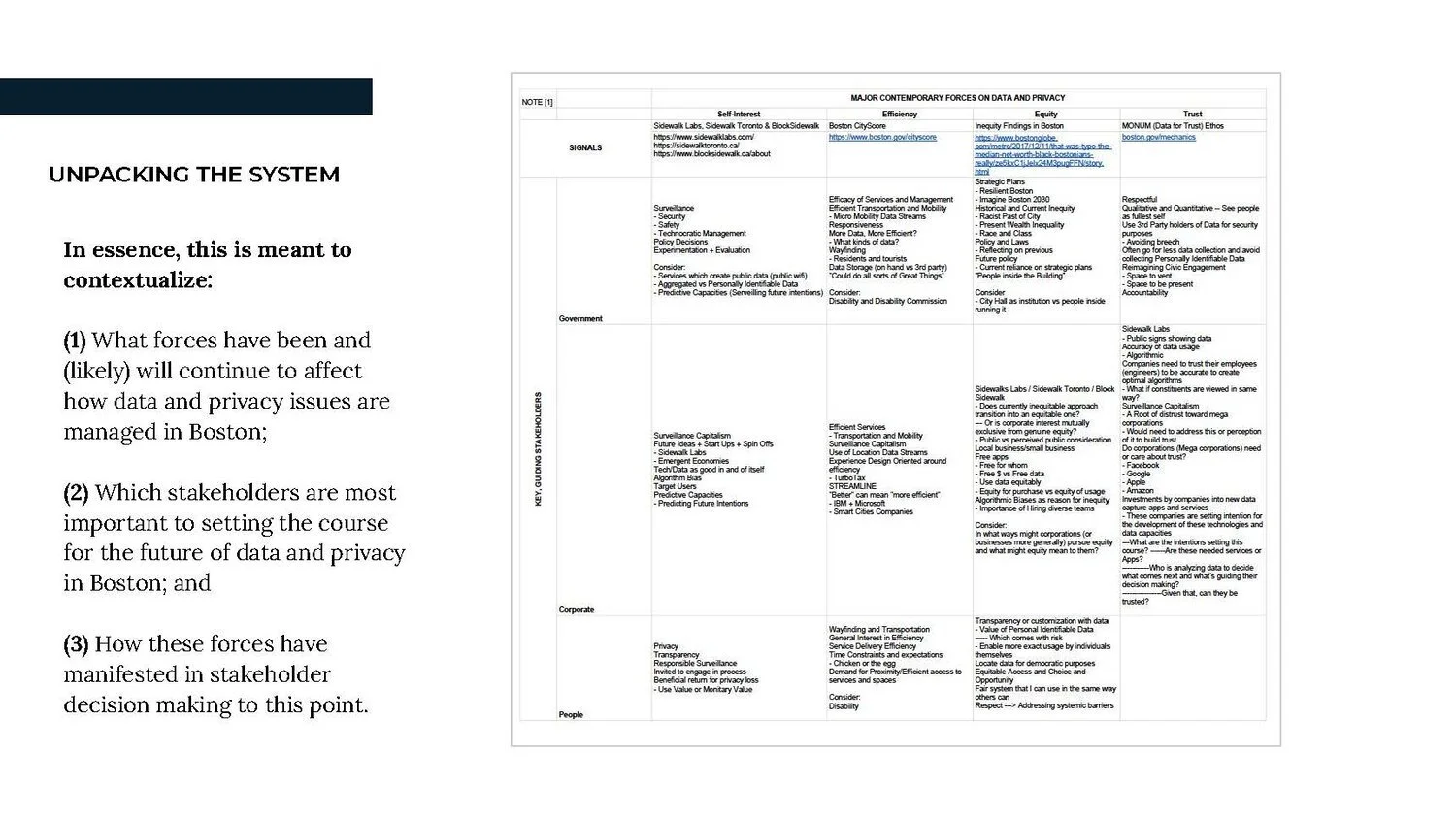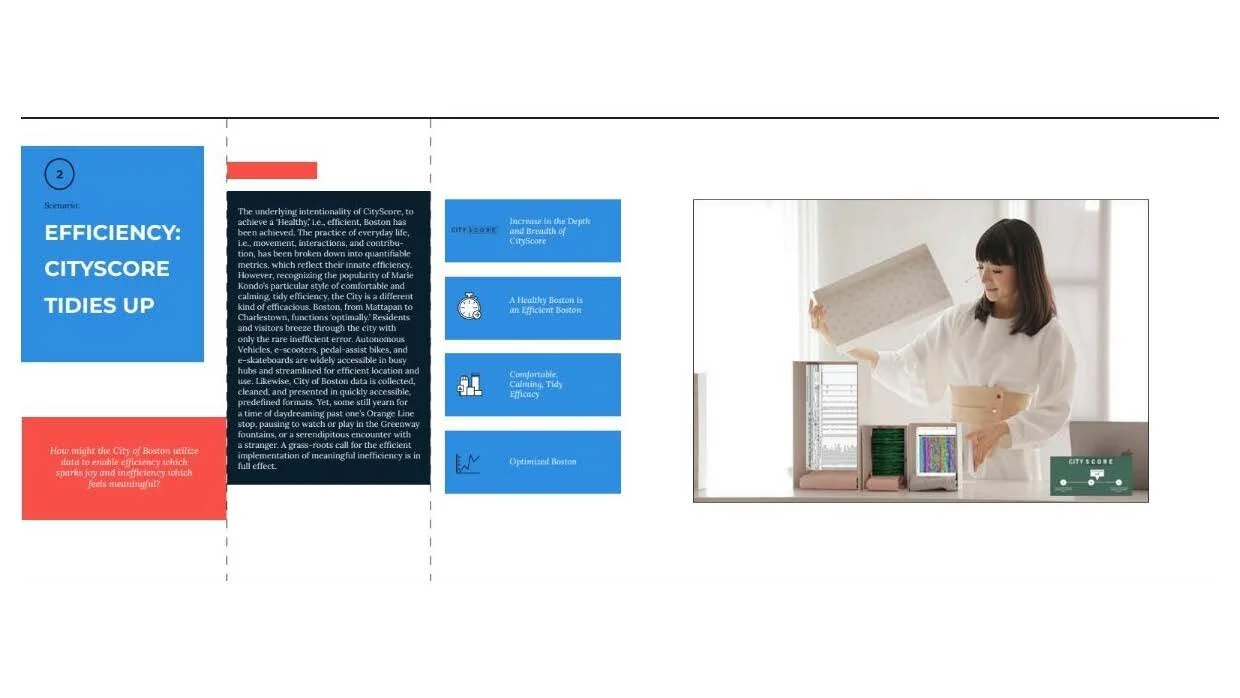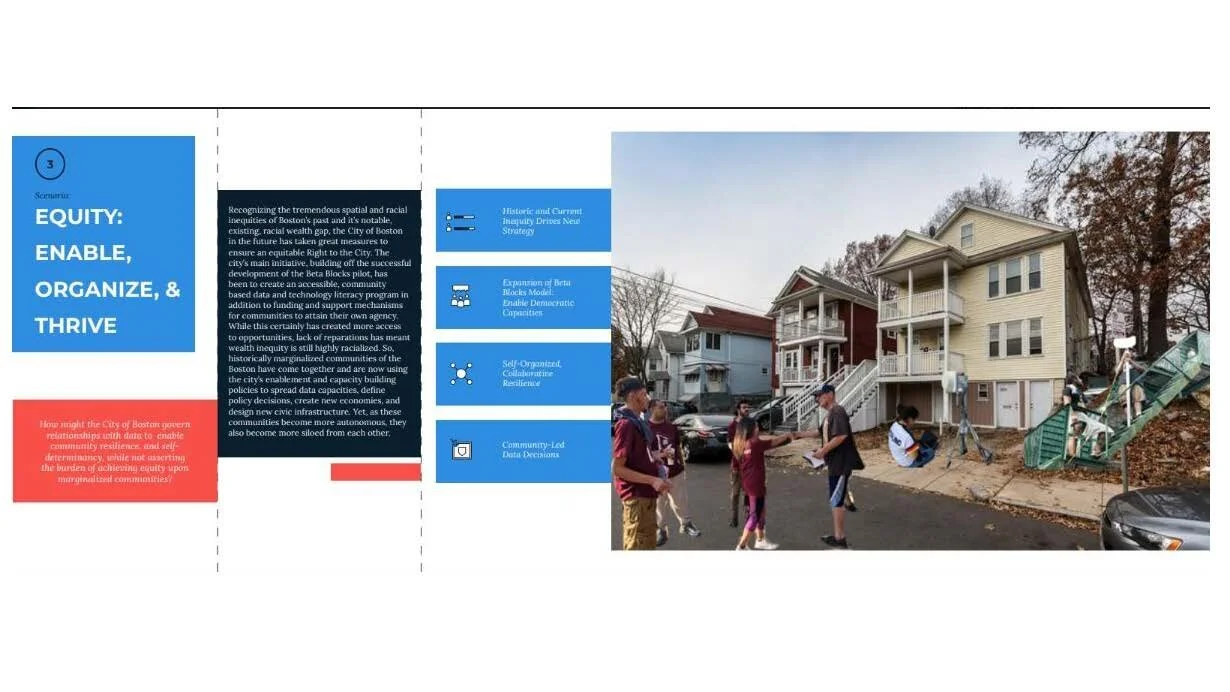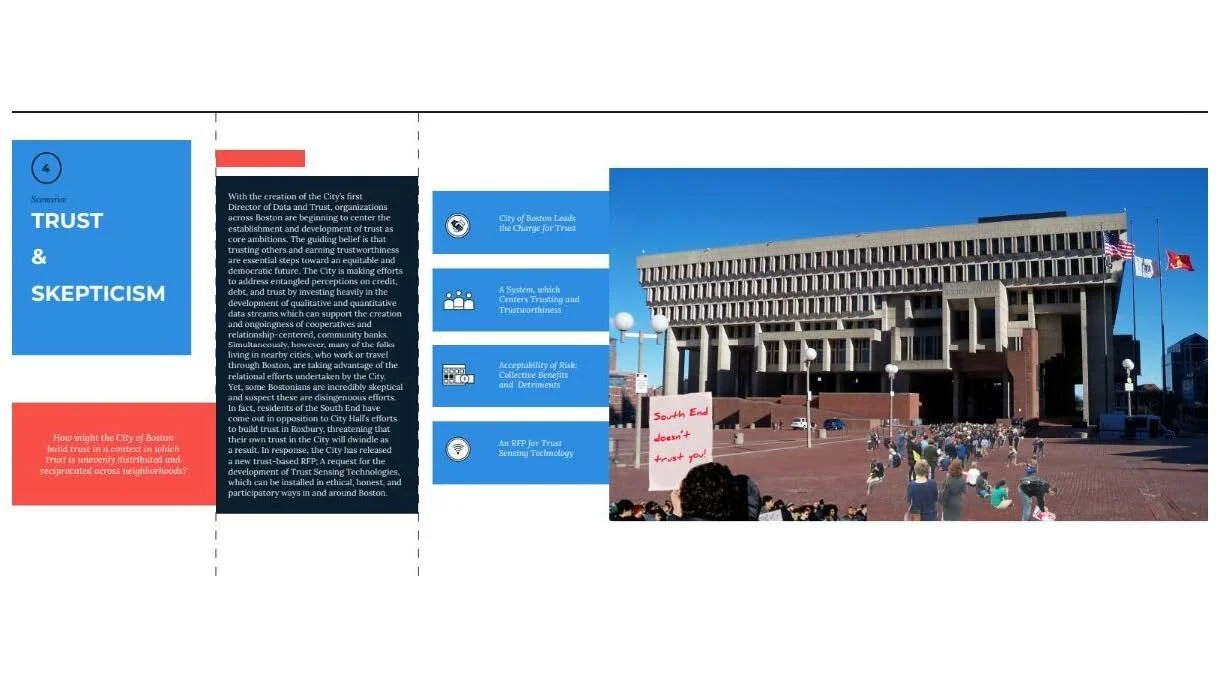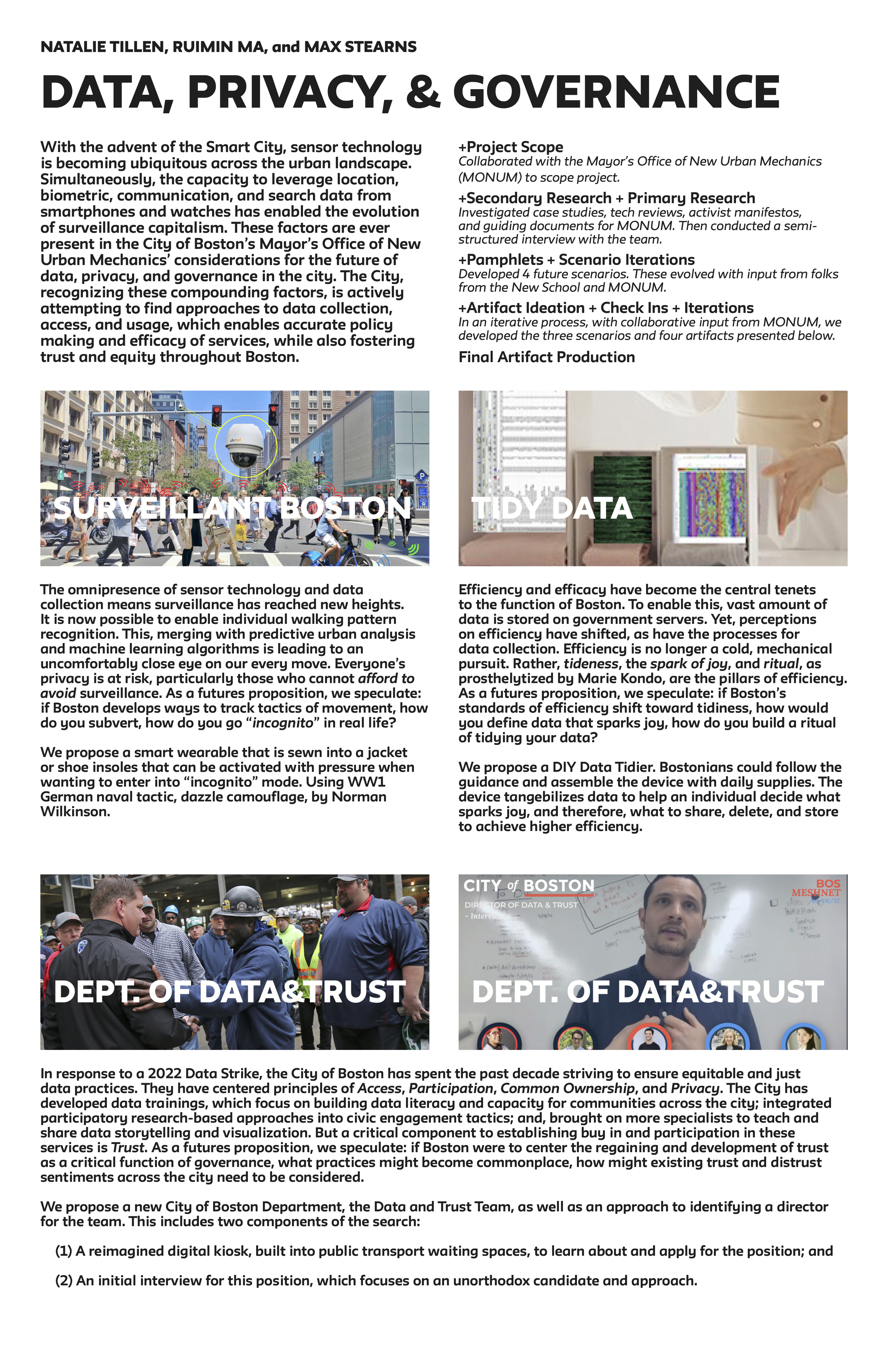Data | Privacy Speculative Futures
Project Type
Research + Speculative Design
This was a series of provocational speculative designs exploring the future dynamics of data, privacy, and governance. It was a response to, and in partnership with, the City of Boston’s effort to forward equitable, trustworthy, and reliable approaches to data collection, access, and usage.
Role
MFA Candidate
Parsons, The New School
Partners
Mayor’s Office of New Urban Mechanics,
City of Boston
Natalie Tillen
Ruimin Ma
Project Timeline
Mar-May, 2019
The DIY Data Tidier allows Bostonians to personally decide what Data sparks joy; what to share, delete, and store to achieve higher data efficiency.
Challenge
With the advent of the Smart City, sensor technology is becoming ubiquitous across the urban landscape. The City of Boston’s Mayor’s Office is eager to identify and develop approaches to data collection, access, and usage, which enables accurate policy decision making and efficacy of services, while also fostering trust and equity across and throughout Boston.
Approach
As a team, Natalie Tillen, Ruimin Ma, and I collaborated with the Mayor’s Office of New Urban Mechanics (MONUM) to scope our project.
We investigated case studies, tech reviews, activist manifestos, and guiding documents for MONUM. Then, we conducted semi-structured interviews with the team.
We followed this by developing 4 future scenarios. These evolved with input from expert futurists and members of the MONUM team.
In an iterative process, with collaborative input from MONUM, we developed the three scenarios and four artifacts presented above.
Outcome
The speculative futures were presented back to the MONUM team. The concepts and artifacts were introduced in a participatory, improvisational form. This stimulated imaginative and collaborative consideration of potential risks and opportunities with actual and potential policy and service decisions.


